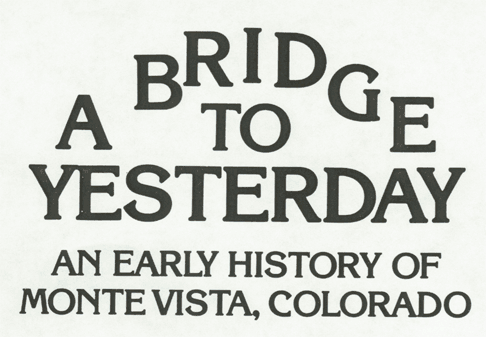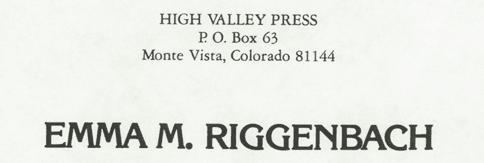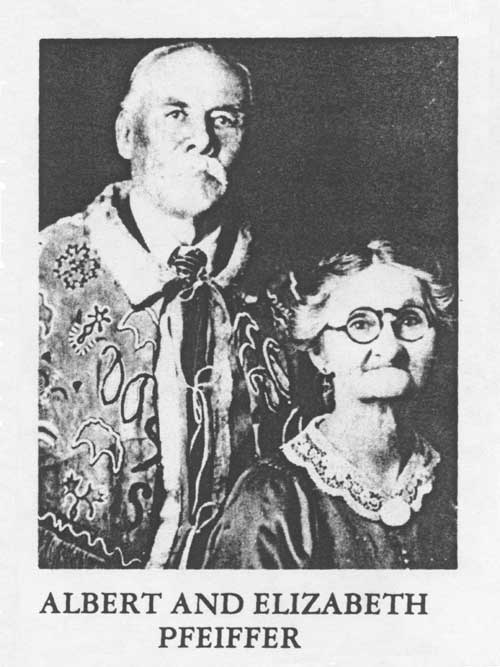

This section is an excerpt from the above cited work by Emma M. Riggenbach
COLONEL ALBERT PFEIFFER,
ALBERT AND ELIZABETH CHAMBERLAIN PFEIFFER
|
Colonel Albert Henry Pfeiffer was born in 1822 in Friesland, Germany across the wide Atlantic. The Colonel was the offspring of a Lutheran minister and his wife. This little boy was, in the course of time, to leave his native land and go across the Atlantic to that place called America. He was destined to take an active part in the development of the American Southwest, as a scout, explorer and soldier in the United States Army. He was twenty-two years old when he came to America and joined a fighting outfit at St. Louis, working down into Santa Fe. Thereafter Pfeiffer made many trips to Santa Fe where he met his beautiful wife, Antonita. Her wedding dress, embroidered by the sisters of the convent in red roses, was the talk of the colony. In June, 1859, three years after his marriage, Pfeiffer received his assignment as Captain of Company A, Abiquiu Mounted Volunteers Militia of New Mexico. The year 1863 was a tragic one for Captain Pfeiffer. He was stationed at Fort McRae, New Mexico. While bathing with his wife in the hot springs nearby, they were attacked by a party of Apaches. His wife and her servant girls were taken captive. Pfeiffer pursued his wife's captors, knowing that he would find her and the servant girls murdered. In 1865 Pfeiffer was appointed an Indian Agent. In 1886 he received his appointment to the rank of Brevet Lieutenant Colonel for bravery and meritorious service. During this time Colonel Pfeiffer became a fast friend of the Utes. A dispute arose between the Utes and Navajos over the ownership of the waters of the Pagosa Springs. The dispute was to be settled by a duel between a man chosen by the Navajos and one chosen by the Utes. The Navajos chose a huge warrior of their tribe. The Utes chose Colonel Pfeiffer - a man of small stature. The duel was to be fought with knives, with both combatants stripped totally naked to forestall concealed weapons. At the first thrust of the knife Pfeiffer killed his opponent. Thus, through his bravery, he won the Pagosa Springs for the Utes. In later years, a monument was erected to commemorate Colonel Pfeiffer. At a later date he came upon a band of warring Comanches. Pfeiffer shot the chief, killing him instantly. The chief was wearing the beautifully beaded deerskin coat shown in the adjacent photo of his son - Albert Henry Pfeiffer, Jr. - and his son's wife, Elizabeth. Pfeiffer served as Indian Agent at Abiquiu, New Mexico for many years. It was during this time that he took up his homestead on the upper Rio Grande near Granger where he lived his declining years and is buried. |
The Pfeiffer ranch at Granger was where Albert, Jr. met, courted and wed Elizabeth Chamberlain. The service was performed at the little church on June 21, 1879 by Father Brinker.
Elizabeth was terribly frightened when a band of Indians surrounded their wagon as her father was getting supper. The children were hidden in the wagon. Her father offered the Indians some food, which they eagerly accepted. The sack of flour he gave them they scattered over the ground as they rode away. Their entry was over Mosca Pass into the San Luis Valley, through the Sand Dunes to Fort Garland. From there they traveled to the Grandfather Gredig's ranch at the fork of the Conejos and Rio Grande Rivers. Then her father went to Conejos to visit the Christopher Stollsteimer family, who were associated with her grandfather in the cattle business. At that point her father, Mr. Eugene Chamberlain, left the Valley, never to be heard from again. Elizabeth attended the Sisters of Loretta convent school in Santa Fe and a Mexican school for two terms. Because of her experiences, she had a good command of four languages - French, German, Spanish and English. She eventually went to live with the Stollsteimer family. When the Stollsteimer family moved to Del Norte, Elizabeth, of course, moved with them. Thus, they became neighbors of Colonel Pfeiffer and his son, Albert. This allowed the two young people to become acquainted and ultimately led to their marriage. |
 Elizabeth Chamberlain Pfeiffer was a true daughter of the old west, having been born at Plum Creek near Denver. Her father was a French trapper, her mother Swiss. When she was very young they went by covered wagon to Deer Lodge, Montana. Lizzie was six years old when her mother died, leaving her a baby sister, Adeline, and a brother, Charles. At their mother's dying request, their father brought the family back to their grandfather, Jerry Gredig. The trip was made by ox-team with the constant fear of Indian raids. As the father knew Indians well, he traveled alone with his friend, John . . . not by caravan.
Elizabeth Chamberlain Pfeiffer was a true daughter of the old west, having been born at Plum Creek near Denver. Her father was a French trapper, her mother Swiss. When she was very young they went by covered wagon to Deer Lodge, Montana. Lizzie was six years old when her mother died, leaving her a baby sister, Adeline, and a brother, Charles. At their mother's dying request, their father brought the family back to their grandfather, Jerry Gredig. The trip was made by ox-team with the constant fear of Indian raids. As the father knew Indians well, he traveled alone with his friend, John . . . not by caravan.